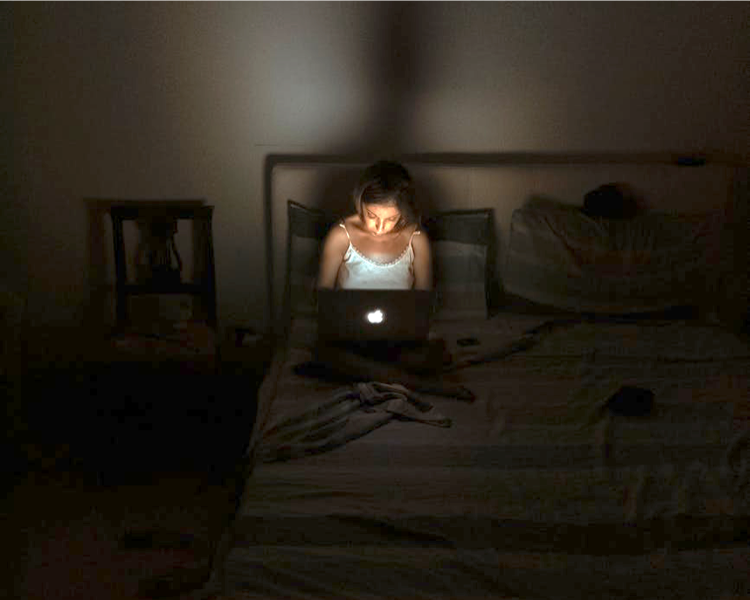Technology-Facilitated Child Sexual Exploitation and Abuse (CSEA): the ‘Flaw in the Law’
Recent figures suggest that the number of young people falling victim to sexual abuse online continues to rise. Given the substantial impact such experiences can have, we are challenging whether current legislation understands the true nature of such offending and reflects the actual harm caused.
The rise in ‘online grooming’
According to recent figures published by the National Society for the Prevention of Cruelty to Children (NSPCC), over 5,000 offenses of ‘online grooming’ were recorded in the 18 months prior to March 2019. Thus, compared to the same period of the previous year, the number of young people being targeted as potential victims of online sexual abuse has gone up by more than 50%. This is of concern considering the impact that sexual abuse can have on young people. Most commonly reported symptoms include stress, fear, anxiety and depression [1, 2, 3], as well as embarrassment, self-harm and the fact that the abuse will stay with them for a long time [4]. Additional complexities faced by victims of CSEA via internet technologies are that the abuse took place in their own home and that images taken may be distributed and permanently available [5].
Online CSEA is as harmful as offline
Notably, work by Hamilton-Giachritsis and colleagues [4, 5] found that experiences of CSEA online are as harmful as those experienced offline, yet are often viewed as being less so. Young people may even be seen as more ‘active’ in their own abuse, raising concerning parallels with historical views of victims, such as those in Rotherham. The additional complexities arising from online CSEA require specific considerations [5], not only when it comes to therapeutic interventions, but also with regard to being reflected in the law and sentencing of those convicted of these offences.
In our review of the legislation, it has become apparent that the law reflects a different understanding of sexual crimes committed against children via internet technologies (and the associated harm) to that of professionals working in this area. While it may sometimes be the case that online sexual communication is a precursor to and facilitator of sexual abuse in the physical world, our research suggests that in many cases online interactions do not lead to a physical meeting. Instead, serious forms of CSEA take place by means of internet technologies [4, 6, 7, 8].
It can be hard initially to comprehend the range of abusive activities occurring via internet technologies, and a common misperception is to believe that it is restricted to ‘sexting’-type activities. However, sexual crimes that take place online include very severe forms of abusive activity, with young people coerced via means such as blackmail and believing that they are in a relationship. Based on our professional expertise, it is our belief that the law has to reflect both the severity of the crime and the resulting harm to victims. This view is shared by other professionals working in this area.
The NSPCC campaign
In 2014, the NSPCC ran a national campaign in the UK to argue that the criminal justice system must be properly equipped to tackle online CSEA (https://www.nspcc.org.uk/what-we-do/campaigns/flaw-law/). As a result, in 2015, Section 15a was included in the Sexual Offences Act 2003 in order to criminalise the act of meeting a child following sexual grooming online, and was subsequently amended in 2017 to incorporate the sexual communication itself (Section 15Ab). However, the question arises as to how effective these changes are, and whether they actually achieve their intended aim.
Flaws in the current legislation
One key consideration is that the offense of meeting a child following sexual grooming online (Section 15) is punishable by a prison sentence of up to ten years, yet the act of sexual communication with a child (Section 15A) is punishable by a prison sentence of only up to two years [9]. This appears to demonstrate that ‘mere’ communication is viewed as a facilitative tool, with serious harm ensuing only when further steps (i.e., a physical meeting) are undertaken. Although a shorter sentence may be appropriate (for example, where law enforcement seeks to intervene early in a preventative capacity, perhaps prior to more serious abuse taking place), the option for longer sentences to reflect the actual harm caused is needed.
While one may argue that the additions of Sections 15 and 15A have resolved the police dilemma of how to charge suspects, there are indications that for a variety of reasons it has not made a great deal of difference. First, it is necessary to prove that the communication is sufficiently explicit (as required by both Section 8c and Section 10d). Second, and very importantly, the new legislation fails to acknowledge the fact that the communication in and of itself is a form of CSEA. Sadly, such misconceptions have long been apparent in the range of sentencing available in the UK.
Conclusion
While Section 15A is appropriately conceived and provides a suitable sentence range for those who are attempting to ‘groom’ children for the purpose of engaging them in sexual communication (i.e., without any arrangements for a physical meeting taking place), it fails to understand the true nature of these interactions, and misconceives what ‘grooming’ actually ise. Our review illustrates how an adult who is gaining sexual gratification from engaging in sexual communication with a child is manipulating the child to behave in a manner that achieves this. The question is therefore not merely about ‘incitement’, but about the level of harm and victimisation experienced by children online as a result of the manipulation, exploitation and abuse. Manipulation of children is far less black and white than the law imagines, and the interactions via internet technologies described in our research are far more potent.
Notes
a Section 15: ‘Meeting a child following sexual grooming’ (Sexual Offences Act 2003) https://www.legislation.gov.uk/ukpga/2003/42/section/15
b Section 15(A): ‘Sexual communication with a child’ (Sexual Offences Act 2003) https://www.legislation.gov.uk/ukpga/2003/42/section/15A
c Section 8: ‘Causing or inciting a child under 13 to engage in sexual activity’ (Sexual Offences Act, 2003) https://www.legislation.gov.uk/ukpga/2003/42/section/8
d Section 10: ‘Causing or inciting a child to engage in sexual activity’ (Sexual Offences Act, 2003) https://www.legislation.gov.uk/ukpga/2003/42/section/10
e ‘Grooming’ is defined as “a process by which a person prepares a child, significant adults and the environment for the abuse of this child” [10]. Although this definition is based on sexual grooming in the physical world, its features can be applied to the online environment, equally referring to a process by which a child is prepared for abuse via internet technologies.
References
[1] Finkelhor, D. F., Mitchell, K. J., & Wolak, J. (2000). Online victimization: A report on the nation’s youth. Retrieved from: http://www.unh.edu/ccrc/pdf/jvq/CV38.pdf
[2] Mitchell, K. J., Finkelhor, D., & Wolak, J. (2004). Victimization of youths on the Internet. In J. L. Mullings, J. W. Marquart & D. J. Hartley (Eds.), The victimization of children: Emerging issues (pp. 1-39). New York, NY: The Haworth Maltreatment & Trauma Press.
[3] Staksrud, E., & Livingstone, S. (2009). Children and online risk: Powerless victims or resourceful participants? Information, Communication & Society, 12, 364-387. doi: 10.1080/13691180802635455
[4] Whittle, H., Hamilton-Giachritsis, C., Beech, A. R., & Collings, G. (2013). A review of young people’s vulnerabilities to online grooming. Aggression and Violent Behavior, 18, 135-146. doi: 10.1016/j.avb.2012.11.008
[5] Hamilton-Giachritsis, C. E., Hanson, E., Whittle, H. & Beech, A. R. (2017). Impact of online and offline child sexual abuse: “Everyone deserves to be happy and safe”. Retrieved from: Impact of online and offline child sexual abuse: https://learning.nspcc.org.uk/research-resources/2017/impact-online-offline-child-sexual-abuse/
[6] Kloess, J. A., Hamilton-Giachritsis, C. E., & Beech, A. R. (2017). Descriptive account of victims’ behaviour and responses in sexually exploitative interactions with offenders. Psychology, Crime & Law, 23(7), 621-632. doi: 10.1080/1068316X.2017.1293052
[7] Kloess, J. A., Hamilton-Giachritsis, C. E., & Beech, A. R. (2019). Offense processes of online sexual grooming and abuse of children via Internet communication platforms. Sexual Abuse: A Journal of Research and Treatment, 31(1), 73-96. doi: 10.1177/1079063217720927
[8] Kloess, J. A., Seymour-Smith, S., Hamilton-Giachritsis, C. E., Long, M. L., Shipley, D., & Beech, A. R. (2015). A qualitative analysis of offenders’ modus operandi in sexually exploitative interactions with children online. Sexual Abuse: A Journal of Research and Treatment, 29(6), 563-591. doi: 10.1177/1079063215612442
[9] Home Office (2003). Sexual Offences Act 2003. Retrieved from: http://www.legislation.gov.uk/ukpga/2003
[10] Craven, S., Brown, S., & Gilchrist, E. (2006). Sexual grooming of children: Review of literature and theoretical considerations. Journal of Sexual Aggression, 12, 287-299. doi: 10.1080/13552600601069414




